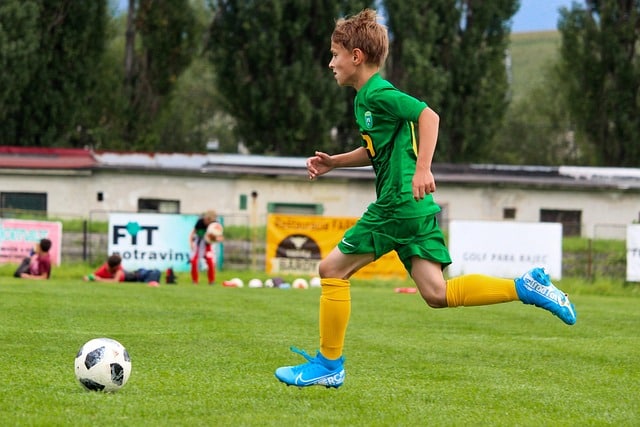Football, like any sport, is a game of strategy, wit, and skill. On any given match day, what separates the winners from the losers isn’t just raw talent, but the ability to outsmart your opponents with clever tactics. Sure, it helps if your players can dribble like Messi or shoot like Ronaldo, but without a sound game strategy and tactical discipline, even the most gifted team can fall short.
In this article, we’re going to dive into winning football tactics that can help you outplay your opponents—whether you’re a coach looking to bring the best out of your team, or a player looking to understand the game at a deeper level. From team formations to attacking tactics and pressing games, these tactics are proven to take your game to the next level.
1. Team Formation: The Bedrock of Strategy
Before you even step onto the pitch, a solid team formation is the cornerstone of any tactical approach. It’s your blueprint—the framework around which everything else revolves. From the 4-4-2 to the 3-5-2, different formations serve different purposes, and choosing the right one can make all the difference.
One of the most popular formations today is the 4-3-3. With four defenders, three midfielders, and three attackers, this setup offers a solid defensive base while still allowing for fluid attacking play. It’s particularly useful against teams that rely heavily on possession, as it gives you the ability to crowd the midfield and control the tempo.
Alternatively, the 4-2-3-1 is great for teams that want to maintain a strong defensive line while still having options for quick counter-attacks. The two holding midfielders act as a protective shield for the defense, while the attacking midfielders and wingers provide creative outlets.

2. Defensive Strategies: A Well-Organized Wall
Let’s face it: a strong defense is the foundation for any successful team. A team can have all the attacking flair in the world, but if the defense crumbles under pressure, it’s all for nothing. That’s why having a well-drilled defensive strategy is non-negotiable.
One effective strategy is zonal marking, where each player is responsible for defending a specific area of the pitch rather than an individual player. This method works particularly well in high-pressure situations and helps prevent the opposition from exploiting spaces between defenders.
On the other hand, man-to-man marking is often used against particularly dangerous players. If you’re facing an opponent with a star attacker—like a goal machine or playmaker—assigning a player to stick with them wherever they go can neutralize their impact.
Also, high pressing is gaining popularity as a defensive tactic. This involves putting pressure on the opposition the moment they have the ball. By pressing high up the pitch, you can force them into mistakes or hurried passes, leading to turnovers in dangerous areas. It’s a risky tactic but can pay off handsomely when executed properly.
3. Attacking Tactics: Turning Defense into Offense
Once you’ve shut down your opponent’s advances, it’s time to flip the switch and hit them where it hurts—attacking. A fluid, creative attacking setup can be the key to breaking through even the most solid defenses.
One of the best attacking tactics is the width-and-deepen strategy. This involves stretching the opposition across the pitch, making them cover more ground, and then exploiting the spaces they leave open. Wingers play a crucial role in this system, as they drag defenders wide, allowing central players to attack through the middle or create overloads on one side.
The false nine tactic is another effective attacking strategy. A false nine is a striker who drops deep into the midfield rather than staying up top. This pulls defenders out of position and creates gaps for the attacking midfielders or wingers to exploit. It’s particularly effective against teams that play with a traditional center-back pairing, as it disrupts their defensive structure.
Finally, quick counter-attacks are an attacking strategy that has stood the test of time. It’s all about seizing on turnovers and exploiting the spaces left by the opposition as they commit players forward. Teams that are good at counter-attacking, like Real Madrid or Leicester City in their title-winning season, can turn defense into attack in the blink of an eye.
4. Pressing Game: Not Just for the Frontmen
A pressing game isn’t just for strikers. In fact, it’s a whole-team philosophy. Gegenpressing, famously employed by Jurgen Klopp’s Liverpool, involves immediately pressing the opposition after losing possession in order to win the ball back high up the pitch. The idea is simple: don’t let the other team breathe. The moment you lose the ball, you swarm them and win it back.
To successfully execute a pressing game, every player needs to be on the same page. The defenders must be prepared to squeeze the space, while the midfielders and attackers need to press aggressively. Timing is key—too early and you risk getting caught out; too late, and the opposition has already established possession.
5. Counter-Attacks: Seizing the Moment
When it comes to counter-attacks, the rule is simple: be swift, be ruthless. This is one of the most efficient ways to break down a team that’s overcommitted in attack. A counter-attack starts the moment the ball is won, and speed is of the essence.
One effective counter-attacking tactic is the quick transition from defense to attack. As soon as the ball is regained, the nearest player should look to make a direct pass forward—ideally to a player in space who can exploit the opposition’s high defensive line. The speed at which the ball moves forward is crucial. If it’s slow, the opposition will have time to reorganize.
In the classic counter-attacking setup, wingers or fullbacks play a crucial role. They must be fast, direct, and capable of delivering pinpoint crosses or cutting inside to finish. Think of the great counter-attacking teams like Chelsea under Antonio Conte, or Atletico Madrid under Diego Simeone—they mastered the art of punishing teams that went too far forward.
6. Set Pieces: The Hidden Goldmine
In the fast-paced world of modern football, set pieces are often overlooked as a potential game-changer. However, when executed properly, they can be a goldmine of opportunities.
One tactical set-piece strategy involves routine and movement. Whether it’s a corner or free kick, it’s crucial that your team has set patterns in place. A well-drilled corner routine that pulls the defenders out of position can create clear-cut chances for the attacking players. For instance, near-post flick-ons, long-range shots, or a simple cutback can all catch the opposition off guard.
Another tactic is targeting the goalkeeper. Many goalkeepers are susceptible to high balls in the air, particularly when under pressure. By crowding the goalkeeper during set pieces, you create a distraction, allowing your attackers to swoop in for a header or a tap-in.
7. Positional Play: Playing with Patience
Football isn’t just about running at the opposition with the ball at your feet. Sometimes, the best way to break down an opponent is through positional play—moving the ball with purpose, controlling the game, and waiting for the right moment to strike.
Positional play focuses on maintaining balance and spacing. This strategy is central to many top teams, including Barcelona during their glory years. The key is to maintain possession, patiently move the ball around, and look for pockets of space to exploit. It also involves creating triangles—three players always available to receive the ball, no matter what happens.
8. Game Strategy: Adapting to the Flow
Lastly, perhaps the most important winning tactic is adaptability. No game plays out exactly as you plan, so it’s essential to be able to read the flow of the match and adjust accordingly. Maybe your opponent’s midfield is too strong for your 4-4-2 to handle, or perhaps they’re leaving too much space in behind for your counter-attacks.
A winning football strategy is one that can evolve in real-time. If pressing high isn’t working, maybe you’ll drop back and shift to a more defensive posture. If your strikers are being double-marked, it might be time to switch to a different attacking tactic or alter the formation to create new overloads.
Conclusion: Tactics for Success
In football, outplaying your opponents doesn’t always mean outscoring them. It’s about implementing a well-thought-out game strategy, executing defensive strategies to protect your goal, and seizing on every opportunity—whether it’s in the form of a quick counter-attack, a set piece, or simply playing with patience and positional awareness.
Winning football tactics aren’t just about fancy tricks or dazzling skills. They’re about understanding the game, reading the situation, and using your team’s strengths to exploit your opponent’s weaknesses. So, whether you’re a coach or a player, remember this: football is as much a battle of wits as it is of athleticism. Get your tactics right, and the victory will follow.
Frequently Asked Questions (FAQs)
- What’s the best formation for a defensive strategy? A 4-4-2 or 5-4-1 are great formations for a solid defensive setup, as they provide cover across the backline and help prevent counter-attacks.
- How can I improve my pressing game? To improve your pressing, focus on teamwork. Everyone needs to press as a unit. You can start by practicing pressing drills, working on timing and positioning.
- What is positional play, and how can it help my team? Positional
play is about maintaining space, moving the ball with purpose, and waiting for the right moment to attack. It allows your team to control the tempo of the game.
- How do I execute a quick counter-attack? The key to a quick counter-attack is speed. When you win the ball, move it forward quickly, aiming for wingers or forwards in space.
- How can I make set pieces more effective? Set pieces can be made effective by having well-rehearsed routines, targeting the goalkeeper, and ensuring your players make clever runs.
- How do I adapt my tactics during a match? Adaptability is key. If one tactic isn’t working, switch it up. Pay attention to the flow of the game and adjust your formation or approach as needed.



